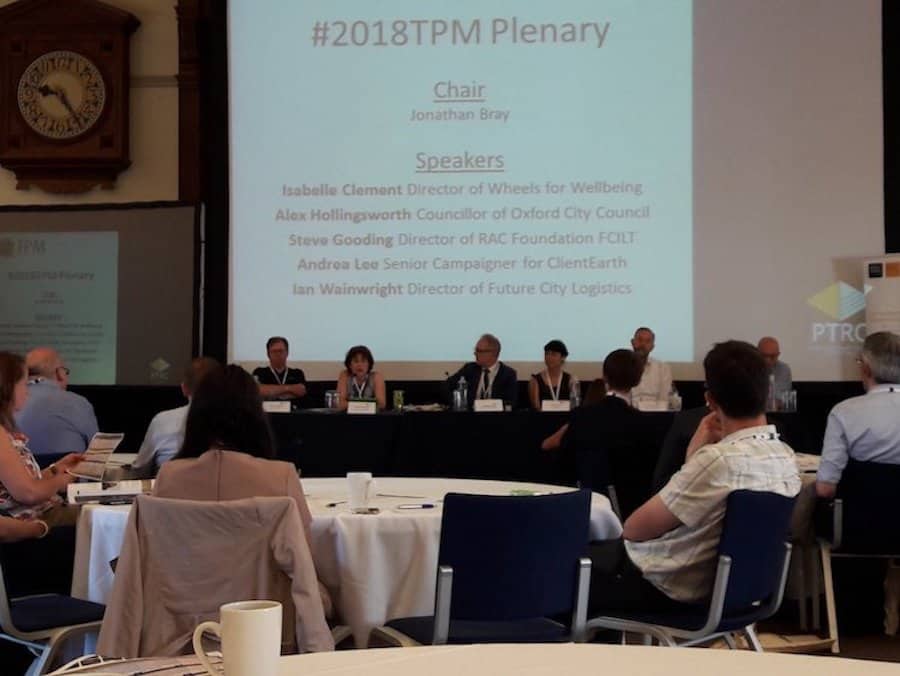Wheels for Wellbeing brings the Social Model of Disability to Transport Practitioners
Our Director was asked to speak as part of the opening plenary of this year’s Transport Professionals’ Meeting, held in Oxford at the beginning of July. We thought we’d publish her intervention here, for everyone’s benefit, not just the 200 transport professionals who got to hear her on the day:

“It’s a great pleasure to be speaking at this year’s TPM opening plenary. I was asked to think about the biggest challenges for Transport professionals over to the next 10 years. For me one of the biggest concerns is the physical inactivity crisis.
We know that if you are a disabled person, or you suffer from one type of health concern or another, you are far more likely to develop others impairments, other health conditions (the medical profession calls this, I believe, co-morbidity). In great part, this is due to a lack of physical activity.
And worst of all, society condemns Disabled or older people to dying younger than they should, by making assumptions about the inevitability of physical inactivity: we hear it all the time; people say, for example: “ah yes, well, not everyone can cycle!”
I want to challenge this statement and explain to you the importance of a concept you may not be familiar with: the social model of disability.
What is the social model of disability and why is it of relevance to transport professionals you may ask? I will explain:
At Wheels for Wellbeing, we speak to many people who say:
- I can’t cycle!
- I can’t balance, so I can’t cycle.
- I have dodgy knees, so I can’t cycle
- I can’t see, so I can’t cycle
In short, they’re telling us “my body doesn’t work like everyone else’s or like it used to so, I can’t cycle. It’s my problem”.
Fair enough you might say. Not everyone can cycle.
Except, in our opinion, that’s not true!
The statements I just mentioned reflect a medical model of disability way of thinking: bits of me don’t work, therefore, unless I can be fixed, I can’t do certain things.
The reality is very different. What people really mean is, for example:
- I can’t cycle, not because I don’t know how to but because I can’t afford to buy the trike I need (and there’s nowhere I can rent it either).
- I can’t cycle, not because I don’t know how to but because the cycle route includes steps to get up & over the bridge over the railway.
- I can’t cycle, not because I don’t know how to but because there isn’t a way for me to find someone to pilot my tandem with me.
So now we see that it’s not the person or their impairment that is the problem. It’s the way the cycling environment has been planned and delivered: with only the fit and the healthy in mind. No wonder not everybody can cycle!
And this is really important for Transport professionals to understand. Because, as I said earlier, people are literally dying of the consequences of physical inactivity.
I say we have to stop seeing Transport and Health as separate disciplines. We have to turn Transport, and by this I mean Active Transport into our greatest tool to transform the health of the nation, including the health of those who need it most: the health of people with existing health conditions and the health of Disabled people.
In order to unlock the potential of active travel as the magic pill it could be, we must all stop putting barriers in the way of more people being physically active. We must plan transport systems which enable cycling by the least fit and healthy. And if we do so, not only will disabled and older people choose to be more physically active, but everyone else will benefit too.
